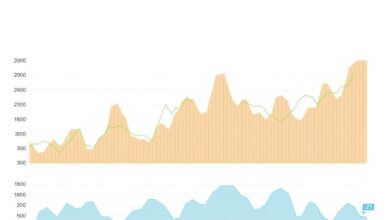What is the 50/30/20 budgeting rule and how to apply it?

Allocate 50% of income to needs, ensuring essential expenses like housing, food, and utilities are covered. This finance structure lays a solid foundation for stability. Prioritize these commitments to maintain a balanced lifestyle.
Next, dedicate 30% towards wants. This category encompasses discretionary spending such as entertainment, dining out, and travel. Allowing room for enjoyment enhances quality of life while keeping overall finances healthy.
Finally, reserve 20% for savings and debt repayment. Establish an emergency fund to cover unforeseen circumstances and aim to reduce existing debts. This proactive strategy not only secures financial future but also fosters peace of mind.
Adopting this straightforward framework enables individuals to gain control over their monetary habits, paving the way for long-term prosperity. Embrace this model to transform financial management into a manageable endeavor.
How to Calculate Percentages
To determine percentages in your spending plan, use the formula: (part/whole) x 100. For example, if monthly savings are $200 from a total income of $2000, calculate as follows: (200/2000) x 100 = 10%. This means savings constitute 10% of income.
Apply this method to expenses. If monthly rent is $800 out of that same $2000 income, then (800/2000) x 100 = 40%. This indicates rent represents 40% of overall finances.
For a clearer finance structure, break down each category into its percentage. Sum all parts to confirm they total 100%. If they exceed or fall short, reassess allocations in your plan.
Utilize spreadsheet software for ease. Input values and create formulas to automatically calculate percentages as you update figures. This ensures real-time insights into how well your spending aligns with goals.
Regularly review these calculations to adjust priorities based on changing financial situations or objectives. Fine-tuning this aspect enhances control over your financial landscape.
Allocating Needs and Wants
Identify essentials by categorizing expenses into two main groups: needs and wants. This classification helps streamline your spending plan, ensuring that financial resources are directed toward priorities.
- Needs:
- Housing costs (rent or mortgage)
- Utilities (electricity, water, gas)
- Groceries for sustenance
- Healthcare expenses (insurance, medications)
- Transportation (public transit or vehicle maintenance)
- Wants:
- Dining out at restaurants
- Luxury items (clothing, gadgets)
- Entertainment subscriptions (streaming services, gaming)
- Travel experiences
- Cultural activities (concerts, events)
Aim for a balanced finance structure by allocating 50% of income to needs, 30% to wants, and 20% to savings. Adjust these percentages based on personal circumstances while maintaining a focus on long-term financial health.
- Review monthly income and fixed expenses.
- Create a list of all recurring needs.
- Assess discretionary spending on wants.
- Track spending habits to identify areas for adjustment.
This method fosters conscious decision-making regarding expenditures. Regularly revisiting your allocations will enhance overall financial stability and growth potential.
Tracking Your Expenses
Implement a detailed tracking system for all expenditures. Use apps or spreadsheets to categorize every transaction, ensuring clarity in your spending plan. This approach aids in identifying patterns and helps pinpoint areas where adjustments may be necessary.
Daily Monitoring: Record expenses daily to maintain an accurate overview of financial habits. Allocate a specific time each day for this task, which can prevent oversights and ensure accountability.
Categorization: Divide expenses into categories such as needs, wants, and savings. This classification aligns with your finance structure and allows for a clear understanding of how much is being spent versus saved. Regularly review these categories to adjust them based on changes in lifestyle or income.
Set Limits: Establish monthly limits for each category. This promotes discipline in spending while ensuring that necessary expenses are covered without compromising savings goals.
Analyze Trends: At the end of each month, analyze your spending data. Look for trends in unnecessary expenditures that could be reduced or eliminated entirely. Adjust your future budget allocations based on these insights to enhance financial health.
By maintaining rigorous expense tracking practices, you empower yourself to make informed decisions that ultimately contribute to better savings and a more robust financial framework.
Adjusting for Financial Goals
To align your spending plan with financial aspirations, reassess the 50/30/20 allocation. If saving for a home or retirement, increase the savings percentage by reducing discretionary expenses. For instance, cutting entertainment costs can boost savings for a down payment.
Establish specific targets within your finance structure. Define short-term goals like an emergency fund, and long-term objectives such as retirement savings. This clarity ensures that every dollar spent serves a purpose.
Regularly review progress towards these goals. Monthly check-ins help track whether adjustments are necessary in your budget categories. Use apps or spreadsheets to maintain visibility on both spending and savings.
Consider automating transfers to savings accounts dedicated to specific goals. This approach minimizes temptation to spend allocated funds while maximizing growth potential through interest accumulation.
As priorities change, be flexible in reallocating funds across needs, wants, and savings. Life events such as job changes or family growth may require shifts in your initial budgeting strategy. Adapting quickly will keep you on course toward achieving financial milestones.






